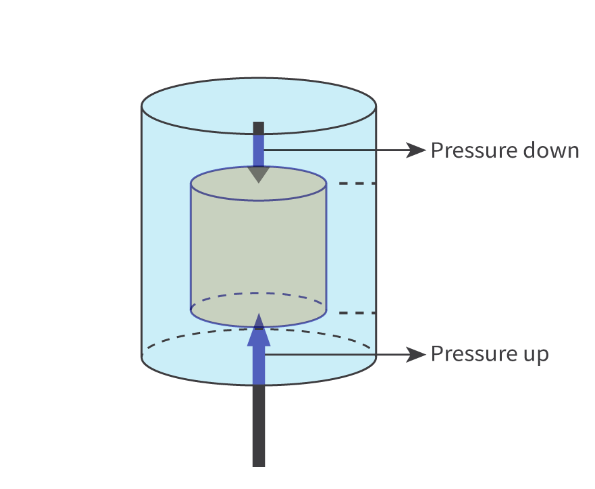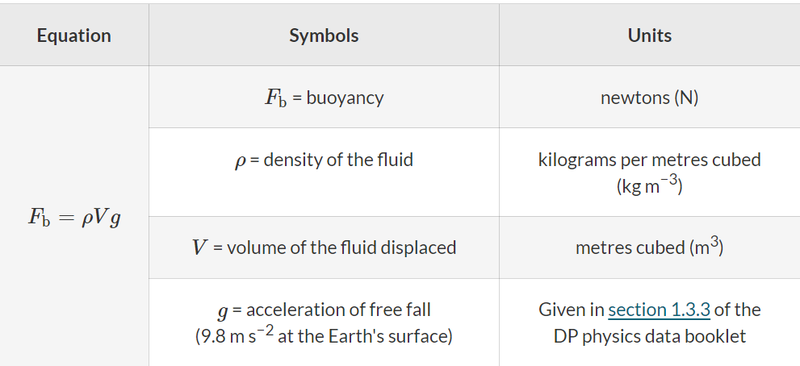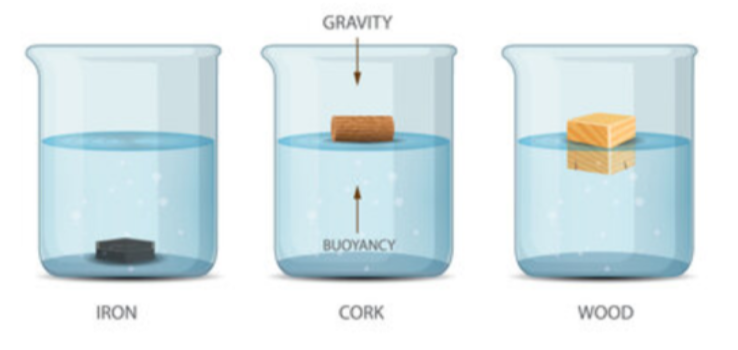Buoyancy
- Buoyancy is the force experienced by a body when it is partly or fully immersed in a fluid.
- Buoyancy, also called upthrust, pushes objects submersed in a fluid upwards.
- Buoyancy is what makes bodies, such as container ship, float on the surface of a fluid, such as water.
- This is due to the movement of water particles pushing against an object.
- Some bodies float and other bodies do not float. In both cases, the bodies experience buoyancy.
- Bouncy is caused by a difference in pressure at the top and bottom of an object.
- As pressure increases with depth, the downward pressure pushing an object up is more than the upward pressure pushing an object down.

- As water has higher pressure than air, the object floats on the surface of water.
- The same still applies to fully submerged objects.
Principle of Buoyancy
- The buoyancy experienced by a body immersed in a fluid is equal to the weight of the fluid displaced.
- Thus incredibly heavy cargo ships can still float, due to them displacing a lot of water, and thus experiencing a lot of buoyancy.
- The volume of liquid displaced is equal to the volume of the submerged object.
- It is independent of mass or weight and is affected by the space taken up by the object.
- The equation for buoyancy is shown below.

- The density of a fluid is determined through the equation p = m/V
- From this formula, we can determine that the buoyancy force is determined by volume displaced, the gravitational acceleration of free fall, and the density of the fluid.
- This means that an object will experience more buoyancy force if it displaces more volume in a denser fluid.
- If an object's weight is more than the buoyancy force, it will sink.
- However, if the weight is less than the buoyancy, it will float.
- That's why balloons can fly: they displace a lot of air, and are very light, meaning the buoyancy force air applies to them is more than their weight!
- Similarly a dense object (higher mass, and therefore weight) that doesn't displace a lot of volume will sink more often than not.
What Makes an Object Float?
- Objects falling through fluids (such as air) have a maximum speed/velocity called terminal speed/velocity, which occurs when the acceleration of the object has reduced to zero because of increasing fluid resistance (which is proportional to velocity).
- After an object has reached its terminal velocity, then an object can either start to float back up, or keep on sinking, depending on whether buoyancy force is greater than or less than or equal to the weight of the object.

- As an object falls in a fluid, the volume it takes up increases, which means that buoyancy force also increases.
- Less dense objects often remain semi-submersed as the they sink a little before the volume they takes up increases the buoyancy force so that it is equal to the weight.
- If you throw a piece of wood in the water, it might be submerged for a moment, but it will quickly bob back up to the surface and float semi-submerged, as the buoyancy force is stronger than the weight when it is fully submersed, causing the wood to decelerate and then accelerate back upwards.

- If an object is fully submersed, and the weight is equal to or greater than the buoyancy, then the object sinks.
- However, if the weight is equal to buoyancy, then the object will be in equilibrium.
- That's how fish can stay still in water, while you float to the surface!



